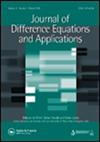Capturing chaos: a multidisciplinary approach to nonlinear population dynamics
IF 1
4区 数学
Q2 MATHEMATICS, APPLIED
Journal of Difference Equations and Applications
Pub Date : 2023-09-29
DOI:10.1080/10236198.2023.2260013
引用次数: 0
Abstract
AbstractThe hypothesis of chaotic population dynamics was proposed in ecology by Robert May in the mid-1970s. At that time the idea was controversial, and it remains a fascinating and unsettled issue today. We report the results of a 20-year laboratory research programme that continued in the tradition of the pioneering ecologist Thomas Park using the Tribolium flour beetle model. We present biological evidence of complex population dynamics – including bifurcations, chaos, saddle nodes, phase switching, resonance effects, and multiple attractors – by using a low-dimensional difference equation model for Tribolium together with carefully designed, conducted, and statistically analysed experiments. The model, parameterized with data, also explains the results of historical Tribolium experiments, such as the classical competition studies of Thomas Park and his colleagues. Our research programme has inspired other studies using the Tribolium mathematical and laboratory model. This work was conducted by a multidisciplinary team, which included Jim Cushing.KEYWORDS: Nonlinear dynamicspopulation ecologyTriboliumchaosstochasticity AcknowledgementsWe congratulate Jim on the occasion of his 80th birthday and for his outstanding career. He was a key member of the ‘Beetle Team,’ a multidisciplinary collaborative research group focused on the integration of nonlinear dynamics theory, statistics, and biological experimentation. The members of the Beetle Team were Jim Cushing, R. F. Costantino, Brian Dennis, Robert A. Desharnais, Shandelle M. Henson, Aaron A. King, and Jeffrey Edmunds. We are grateful to the U.S. National Science Foundation, and the American public who support NSF through their taxes, for the opportunity to pursue our passionate desire to strengthen the empirical ties among ecology, statistics, and mathematics.Data availability statementAll of the data from beetle team research programme are publicly available at Dryad in the Beetle Team Tribolium Data Archive: https://doi.org/10.5061/dryad.qjq2bvqmpDisclosure statementNo potential conflict of interest was reported by the author(s).Additional informationFundingThe Beetle Team research programme was supported by grants from the U.S. National Science Foundation [grant numbers DMS 9206678, DMS 9306271, DMS 9319073, DMS 9616205, DMS 9625576, DMS 9973126, DMS 9981374, DMS 9981423, DMS 9981458, DMS 0210474].捕捉混沌:非线性种群动力学的多学科方法
摘要20世纪70年代中期,罗伯特·梅在生态学中提出了混沌种群动力学假说。当时这个想法是有争议的,今天它仍然是一个迷人而悬而未决的问题。我们报告了一个20年的实验室研究项目的结果,该项目延续了开创性生态学家托马斯·帕克使用Tribolium面粉甲虫模型的传统。通过使用Tribolium的低维差分方程模型以及精心设计、实施和统计分析的实验,我们展示了复杂种群动态的生物学证据,包括分岔、混沌、鞍节点、相位开关、共振效应和多个吸引子。这个用数据参数化的模型也解释了历史上的Tribolium实验的结果,比如托马斯·帕克和他的同事们的经典竞争研究。我们的研究项目启发了其他使用Tribolium数学和实验室模型的研究。这项工作是由一个多学科团队进行的,其中包括吉姆·库欣。关键词:非线性动态种群生态学triboliblumchaos随机性鸣谢在吉姆八十大寿之际,我们祝贺他杰出的事业。他是“甲虫团队”的重要成员,“甲虫团队”是一个多学科合作研究小组,专注于非线性动力学理论、统计学和生物实验的整合。甲壳虫团队的成员是吉姆·库欣、r·f·科斯坦蒂诺、布莱恩·丹尼斯、罗伯特·a·德沙纳斯、香德尔·m·汉森、亚伦·a·金和杰弗里·埃德蒙兹。我们感谢美国国家科学基金会和通过纳税支持NSF的美国公众,感谢他们给我们机会去追求我们热切的愿望,加强生态学、统计学和数学之间的经验联系。数据可用性声明甲虫团队研究项目的所有数据都可以在甲虫团队Tribolium数据档案馆的Dryad上公开获取:https://doi.org/10.5061/dryad.qjq2bvqmpDisclosure声明作者未报告潜在的利益冲突。甲壳虫团队的研究项目由美国国家科学基金会资助[资助号:DMS 9206678、DMS 9306271、DMS 9319073、DMS 9616205、DMS 9625576、DMS 9973126、DMS 9981374、DMS 9981423、DMS 9981458、DMS 0210474]。
本文章由计算机程序翻译,如有差异,请以英文原文为准。
求助全文
约1分钟内获得全文
求助全文
来源期刊
CiteScore
2.10
自引率
9.10%
发文量
70
审稿时长
4-8 weeks
期刊介绍:
Journal of Difference Equations and Applications presents state-of-the-art papers on difference equations and discrete dynamical systems and the academic, pure and applied problems in which they arise. The Journal is composed of original research, expository and review articles, and papers that present novel concepts in application and techniques.
The scope of the Journal includes all areas in mathematics that contain significant theory or applications in difference equations or discrete dynamical systems.

 求助内容:
求助内容: 应助结果提醒方式:
应助结果提醒方式:


